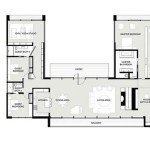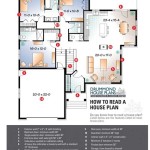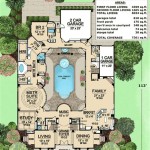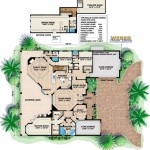Dog house plans for large dogs are detailed instructions and diagrams that guide the construction of a suitable shelter for large breeds. These plans provide specific measurements, materials lists, and step-by-step instructions to ensure the dog house is spacious, durable, and comfortable for the intended occupants.
Large dog breeds, such as Great Danes, Mastiffs, and Saint Bernards, require ample space to move around comfortably and protection from the elements. By following well-designed dog house plans, you can create a custom-tailored shelter that meets the unique needs of your large canine companion.
When selecting or creating dog house plans for large dogs, consider these crucial points:
- Adequate Size
- Durable Materials
- Proper Ventilation
- Insulation for Climate
- Elevated Floor
- Easy Cleaning
- Predator Protection
- Aesthetic Appeal
By incorporating these elements into your dog house plans, you can provide a safe, comfortable, and weather-resistant shelter for your beloved canine companion.
Adequate Size
When determining the appropriate size for a dog house intended for large breeds, several key factors must be considered to ensure the comfort and well-being of the canine occupant. Primarily, the dog house should provide ample space for the dog to stand up, turn around, and lie down in a natural and unrestricted manner.
To calculate the ideal dimensions, measure the dog’s height from the top of its head to the ground and its length from the tip of its nose to the base of its tail. Add approximately 6 inches to both measurements to determine the minimum height and length of the dog house. For example, a dog that measures 30 inches in height and 42 inches in length would require a dog house with a minimum height of 36 inches and a minimum length of 48 inches.
In addition to the minimum dimensions, it is advisable to provide additional space within the dog house to enhance the dog’s comfort and allow for movement. An extra 6-12 inches in both height and length is generally recommended, resulting in a recommended height of 42-48 inches and a recommended length of 54-60 inches for the aforementioned example.
It is important to note that these measurements represent the internal dimensions of the dog house. When selecting or constructing the dog house, ensure that the external dimensions are large enough to accommodate the desired internal space.
Durable Materials
When selecting materials for a dog house intended for large breeds, durability is of paramount importance. The dog house should be able to withstand the elements, including rain, snow, wind, and sunlight, as well as the wear and tear caused by a large and active dog.
The most durable materials for dog houses are pressure-treated wood, cedar, and redwood. Pressure-treated wood is affordable and resistant to rot and decay, making it a popular choice for outdoor structures. Cedar and redwood are naturally rot-resistant and have a pleasant aroma. They are more expensive than pressure-treated wood, but they are also more durable and aesthetically pleasing.
Other durable materials that can be used for dog houses include metal and plastic. Metal dog houses are very durable and easy to clean, but they can be hot in the summer and cold in the winter. Plastic dog houses are lightweight and easy to move, but they are not as durable as wood or metal.
When choosing a material for your dog house, consider the climate in which you live and the size and activity level of your dog. If you live in a cold climate, you will need to choose a material that is well-insulated. If you have a large and active dog, you will need to choose a material that is strong and durable.
Proper Ventilation
Proper ventilation is essential for the health and comfort of your dog. A well-ventilated dog house will help to prevent the buildup of moisture, which can lead to mold and mildew. It will also help to keep your dog cool in the summer and warm in the winter.
- Allows for Air Circulation: Proper ventilation ensures constant airflow within the dog house, preventing the accumulation of stale air and unpleasant odors. Dogs, like humans, require fresh air to maintain good health and prevent respiratory issues.
- Regulates Temperature: Adequate ventilation aids in temperature regulation, keeping the dog house cool during hot seasons and warm during cold seasons. Ventilation allows excess heat to escape in the summer, preventing the dog from overheating. Conversely, in the winter, proper airflow helps trap body heat, providing insulation and keeping the dog warm.
- Reduces Moisture Buildup: Ventilation helps reduce moisture buildup within the dog house, which can lead to mold and mildew growth. These organisms can cause respiratory problems in dogs and can deteriorate the dog house’s structural integrity.
- Prevents Respiratory Issues: A well-ventilated dog house ensures a constant supply of fresh air, reducing the risk of respiratory problems in dogs. Poor ventilation can lead to the accumulation of harmful gases and pollutants, which can irritate a dog’s respiratory system.
To ensure proper ventilation, the dog house should have multiple vents or windows. The vents should be placed on opposite sides of the dog house to allow for cross-ventilation. The windows should be large enough to allow for airflow but small enough to prevent drafts.
Insulation for Climate
Insulation is an important consideration when building a dog house for a large dog, especially if you live in a climate with extreme temperatures. Insulation will help to keep your dog warm in the winter and cool in the summer.
- Protection from Extreme Temperatures: Insulation provides a barrier against extreme temperatures, maintaining a more stable and comfortable environment within the dog house. During cold seasons, insulation helps retain body heat, preventing hypothermia and other cold-related illnesses. In hot seasons, insulation helps regulate temperature by reflecting heat away from the dog house, creating a cooler space for your dog to rest.
- Energy Efficiency: A well-insulated dog house can help to reduce energy costs by minimizing heat loss in the winter and heat gain in the summer. This is especially beneficial if the dog house is heated or cooled, as it can reduce the amount of energy required to maintain a comfortable temperature.
- Improved Comfort for Dogs: Insulation enhances the comfort level for dogs by providing a more stable and controlled environment. Dogs can rest and sleep more comfortably when they are not exposed to extreme temperatures, reducing stress and improving their overall well-being.
- Protection Against Moisture and Condensation: Insulation helps prevent moisture buildup and condensation within the dog house. By regulating temperature and reducing temperature fluctuations, insulation minimizes the formation of condensation, which can lead to mold, mildew, and other moisture-related issues that can affect your dog’s health and the durability of the dog house.
There are a variety of insulation materials that can be used for dog houses, including fiberglass, foam, and straw. Fiberglass and foam insulation are the most effective, but they can be more expensive than straw. Straw is a less expensive option, but it is not as effective as fiberglass or foam.
Elevated Floor
An elevated floor is an important feature to consider when building a dog house for a large dog. It provides several benefits that enhance the comfort, health, and well-being of your canine companion.
- Protection from Moisture and Cold: An elevated floor raises the dog house off the ground, providing a buffer between the cold and damp earth and the interior of the house. This helps to prevent moisture from seeping into the dog house, which can lead to mold and mildew growth. Additionally, it insulates the dog house from the cold ground, keeping your dog warmer during the winter months.
- Improved Ventilation and Airflow: The space beneath an elevated floor allows for better air circulation and ventilation. This helps to prevent the buildup of stale air and moisture within the dog house, creating a healthier and more comfortable environment for your dog. Proper ventilation also helps to regulate temperature, keeping the dog house cooler in the summer and warmer in the winter.
- Easier Cleaning and Maintenance: An elevated floor makes it easier to clean and maintain the dog house. Dirt, debris, and moisture can easily fall through the cracks between the floorboards, preventing them from accumulating inside the house. This makes it easier to keep the dog house clean and hygienic, reducing the risk of bacteria and parasites.
- Protection from Predators and Pests: An elevated floor can provide an additional layer of protection for your dog from predators and pests. It makes it more difficult for animals such as coyotes, snakes, and rodents to access the dog house, ensuring the safety and security of your pet.
When building an elevated floor for a dog house, it is important to use sturdy materials that can support the weight of your dog. The floor should also be raised high enough off the ground to prevent moisture and cold from entering the house. Additionally, ensure that the floorboards are spaced far enough apart to allow for proper ventilation and drainage.
Easy Cleaning
Maintaining a clean and hygienic dog house is crucial for the health and well-being of your large dog. An easy-to-clean dog house allows you to keep it sanitary and comfortable for your pet with minimal effort.
- Smooth Surfaces and Non-Porous Materials: Opt for materials with smooth surfaces and non-porous properties. These surfaces are less likely to harbor bacteria and dirt, making them easier to clean and disinfect. Smooth walls and floors can be easily wiped down with a damp cloth or disinfected with pet-safe cleaning solutions.
- Removable Parts and Washable Components: Consider incorporating removable parts or washable components into the dog house design. Removable roofs, floors, and bedding allow for thorough cleaning and maintenance. Washable bedding and cushions can be easily removed and tossed into the washing machine for deep cleaning.
- Proper Ventilation and Drainage: Ensure adequate ventilation within the dog house to prevent moisture buildup and stale odors. Proper drainage is also essential to prevent water accumulation, which can lead to mold and mildew growth. Ventilation openings and drainage holes allow for air circulation and prevent moisture from becoming trapped inside the house.
- Regular Cleaning Routine: Establish a regular cleaning routine to maintain the dog house’s cleanliness. This includes daily sweeping or vacuuming to remove loose dirt and debris, weekly disinfection with pet-safe cleaning solutions, and periodic deep cleaning to remove any stubborn dirt or stains.
By incorporating these easy-cleaning features into your dog house plans for large dogs, you can ensure that your pet has a clean and healthy living space, reducing the risk of illnesses and providing a comfortable environment for their well-being.
Predator Protection
When designing dog house plans for large dogs, incorporating measures to protect against predators is essential. Large dogs, especially if they spend a significant amount of time outdoors, may encounter potential threats from wild animals or neighborhood pets. Implementing the following predator protection strategies will help ensure the safety and security of your canine companion.
- Elevated Design: Elevating the dog house off the ground provides a physical barrier between your dog and potential predators. This makes it more difficult for animals to approach or access the house, creating a sense of security for your pet.
- Sturdy Construction: The dog house should be constructed using durable materials that can withstand attempts by predators to break in. Avoid flimsy or easily damaged materials that could be easily torn or chewed through. Solid wood, metal, or sturdy plastic are recommended choices for ensuring structural integrity.
- Secure Door and Windows: The door and any windows in the dog house should be designed to prevent predators from entering. Use sturdy materials for the door and secure it with a latch or lock that cannot be easily opened by animals. Windows should be covered with wire mesh or bars to deter predators from breaking through.
- Limited Access Points: Minimize the number of access points to the dog house. A single, well-protected entrance is preferable to multiple openings, as this reduces the potential for predators to find a way inside. Ensure that any ventilation openings are also covered with wire mesh or bars to prevent access.
By implementing these predator protection measures in your dog house plans for large dogs, you can create a safe and secure haven for your beloved pet. Providing protection against potential threats will give you peace of mind and ensure the well-being of your furry friend.
Aesthetic Appeal
In addition to functionality and practicality, the aesthetic appeal of a dog house for large dogs should also be considered. A well-designed dog house can complement the surrounding landscape and enhance the overall appearance of your outdoor space.
- Color and Finish: The color and finish of the dog house should harmonize with the colors and textures of your home and garden. Choose a color scheme that complements the exterior of your house and the surrounding landscape. A natural wood finish, for example, can blend seamlessly with a garden setting, while a painted finish in a bright color can create a cheerful and inviting focal point.
- Architectural Style: The architectural style of the dog house should complement the architectural style of your home. If your home has a traditional design, a dog house with a classic gable roof and simple lines would be a suitable choice. For a modern home, a dog house with a sleek and contemporary design, such as a flat roof and clean lines, would be more appropriate.
- Landscaping: Integrate the dog house into the surrounding landscape by incorporating landscaping elements such as plants, flowers, and pathways. Plant shrubs or flowers around the dog house to create a natural and inviting atmosphere. A gravel or paver pathway leading to the dog house can add a touch of elegance and functionality.
- Decorative Accents: Add decorative accents to the dog house to enhance its visual appeal. A personalized nameplate or a decorative finial on the roof can add a touch of charm and make the dog house more unique. Consider painting a mural or adding other decorative elements that reflect your personal style or your dog’s personality.
By incorporating these aesthetic considerations into your dog house plans for large dogs, you can create a functional and visually pleasing structure that complements your home and outdoor space, providing your beloved pet with a comfortable and stylish shelter.



:max_bytes(150000):strip_icc()/diygirlcave-5b437db6c9e77c0037b166b8.jpg)






Related Posts








